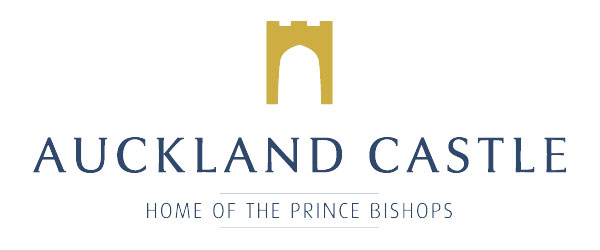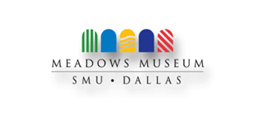Zurbarán masterworks make first U.S. tour, begining at the Meadows Museum
The Meadows Museum at SMU is presenting an exhibition focused on 13 life-size paintings by the Spanish Golden Age master Francisco de Zurbarán (1598–1664), all but one on loan from Auckland Castle in County Durham, England.
Dallas (SMU) — The Meadows Museum at SMU is presenting an exhibition focused on 13 life-size paintings by the Spanish Golden Age master Francisco de Zurbarán (1598–1664), all but one on loan from Auckland Castle in County Durham, England.
Zurbarán: Jacob and His Twelve Sons, Paintings from Auckland Castle, opened Sept. 17, 2017, at the Meadows Museum and will run through Jan. 7, 2018.
Co-organized by the Meadows, The Frick Collection, and Auckland Castle, in association with the Kimbell Art Museum, the exhibition includes details from the first technical analysis of the paintings, conducted over the past year at the Kimbell’s noted conservation lab. The analysis revealed new information about the artist’s materials and creative process, as well as about the print sources for Zurbaran’s figures.
This exhibition marks the first time these works will travel to the United States — and the first time any such series of paintings by Zurbarán has been presented together in the U.S. — and is made possible in part by a restoration project at Auckland Castle. Following the premiere at the Meadows on September 17, 2017, the exhibition will travel to The Frick Collection in January 2018, after which the paintings will be reinstalled at Auckland Castle in May 2018.
These life-size portraits, which depict Jacob and his Twelve Sons, are a visual narrative of Jacob’s deathbed act of bestowing a blessing on each son, blessings which foretold their destinies and those of their tribes. They were created in the 1640s and have hung in the former seat of the Prince Bishops of Durham for more than 250 years as a representation of the progression in relationships between the Christian and Jewish communities in the UK. Twelve of the 13 works in the series were purchased by Bishop Richard Trevor, Bishop of Durham, at a London auction in 1756 from the collection of a Jewish merchant named Benjamin Mendez.
Trevor redesigned Auckland Castle’s Long Dining Room to house the series, seeing in the public presentation of these works an opportunity to make a statement about the need for social, political and religious tolerance and understanding between Christians and Jews in the United Kingdom.
As part of this exhibition, the 12 paintings from Auckland Castle will be reunited with the 13th — depicting Jacob’s son Benjamin — on loan from Grimsthorpe and Drummond Castle Trust, Bourne, Lincolnshire. Also presented will be a number of the engravings and prints that Zurbarán drew upon for visual inspiration, by artists such as Martin Schongauer, Albrecht Dürer and Jacques de Gheyn II.
“Francisco de Zurbarán’s suite of paintings from Auckland Castle is extraordinary, and it’s among the most important collections of his work outside of Spain,” said Mark Roglán, the Linda P. and William A. Custard Director of the Meadows Museum. “We are thrilled that as Auckland Castle undergoes an important restoration, we are able to bring these works from the Golden Age of Spanish painting to Dallas, giving visitors an opportunity to experience Jacob and his Twelve Sons contextualized within the history and aesthetic traditions of Spanish art.”
“Organizing this exhibition of Zurbarán ’s extraordinary series of paintings with the Meadows Museum and Auckland Castle has been an exceptional opportunity,” said Ian Wardropper, Director of The Frick Collection. “We have long wanted to collaborate on a project with the Meadows, with whom we share a strong interest in Spanish Golden Age art, and doing so on this project—which allows us to present Jacob and His Twelve Sons to East coast audiences prior to their return to the newly refurbished castle—has been particularly gratifying.”
The Meadows Museum will display the series together in one gallery, evoking the presentation in the Long Dining Room, the home of the paintings for most of the last 250 years. Wallpaper by Zoffany, a facsimile of the wallcoverings at Auckland Castle, will be used as a backdrop, giving visitors the opportunity to experience the works much as they are usually seen in England.
Another gallery will present details of the technical analysis conducted on the paintings at the Kimbell Art Museum’s conservation lab, where the works were examined with natural and UV light, a stereomicroscope, x-radiography and infrared reflectography. In canvas-weave analysis was carried out on all 13 paintings for the first time. This revealed a wealth of new information about each work, including the type of canvas used, the Sevillian clay earth that comprised the double ground layer, the artist’s application of pigments and glazes and the ways in which he altered aspects of the compositions in the final stages of painting.
The research makes clear how Zurbarán, a master of chiaroscuro, incorporated light and dark underpainting in arranging his compositions from the earliest part of his process. The artist created monochromatic preparatory sketches for each work, using the ground layer as well as areas of red-brown and gray tones to establish his initial design. This approach also helped him determine how to use light and color to its best effect, as can be seen in the opaque underpainting of light areas, such as on Joseph’s coat. Consistent with this approach to planning, Zurbarán created formal contours of certain iconographical elements in the series, such as where he outlined Asher’s hooked cane and certain loaves of bread, with black and red- brown, respectively, before he actually painted them.
“It is rare to have the opportunity to analyze not just one painting but a whole group of works by a single artist that have hung in the same place for the better part of two and a half centuries,” said Claire Barry, Director of Conservation at the Kimbell Art Museum. “Through this process, we have learned about how intimately involved Zurbarán himself was in the paintings creation, rather than it being delegated solely to his workshop. These paintings now speak even more clearly to his creativity and ingenuity as an artist, from the way in which he conveyed the tactile qualities of the figures’ garments to the expressiveness of each individual’s character and pose.”
Researchers at the Kimbell Art Museum also identified additional print sources used for the creation of the series, in particular The Twelve Apostles by Martin Schongauer (15th c.). In some cases, Zurbarán’s figures closely mimic particular engravings, while in other cases the figures are an imaginative fusion of details from multiple sources. For example, while an engraving by Dürer provided the model for the figure of Naphtali, Schongauer’s depiction of Saint Bartholomew served as the prototype for the patriarch’s hand gestures. A selection of these sources and related reference works will be presented as part of the exhibition, including a Spanish-language Bible dating from 1630 and three Dürer woodcut prints dating from 1511, on loan from the Bridwell Library at SMU; Jacques de Gheyn II’s series The Twelve Sons of Jacob plus an engraving by Philips Galle, on loan from the Metropolitan Museum of Art, New York; and the aforementioned engravings by Schongauer, on loan from the Museum of Fine Arts, Boston.
“Showcasing Jacob and his Twelve Sons, the masterpieces of the Auckland Castle collections, at the Meadows Museum and the Frick Collection is a thrilling development for us” commented Chris Ferguson, Curatorial Director for Auckland Castle; “We are very excited that this project will bring these key works to new audiences in the United States for the first time, and bring Zurbarán’s works to even greater attention. The purchase of the paintings by Bishop Richard Trevor in 1756 as a symbol of religious tolerance continues to resonate today. We are grateful to our partners in Texas and New York for showing the paintings in new contexts before they return to a restored Auckland Castle and encouraging more visitors to the North East of England from across the Atlantic”
The exhibition Jacob and his Twelve Sons will be accompanied by a catalogue exploring the various historical, religious and artistic perspectives on these paintings, co-edited by Dr. Susan Grace Galassi, Senior Curator, The Frick Collection, Dr. Edward Payne, Senior Curator, Spanish Art, Auckland Castle, and Dr. Mark A. Roglán, Director, Meadows Museum, and the Scientific Director for the project. In addition to essays by Galassi and Payne, the catalogue also contains essays by: Clare Baron, Curator of Temporary Exhibitions at Auckland Castle; Professor John Barton, Oriel and Laing Professor of the Interpretation of Holy Scripture, Emeritus at Oxford University; Dr. Christopher Ferguson, Curatorial, Conservation and Exhibitions Director, Auckland Castle; Alexandra Letvin, PhD Candidate, Johns Hopkins University; and Akemi Herráez Vossbrink, PhD Candidate, University of Cambridge; and a technical essay authored by Claire Barry, Director of Conservation at the Kimbell Art Museum. The catalogue will also include appendices on canvas-weave analysis and print sources, co-authored by Barry and Don
H. Johnson and Barry and Rafael Barrientos Martinez, respectively.
About Auckland Castle

The Auckland Castle Trust is transforming Auckland Castle into a heritage, arts and faith destination of international significance, helping to reinvigorate Bishop Auckland and stimulate economic regeneration both in the town and surrounding areas.
In autumn 2016 the charity began a major development project designed to realise this vision, including restoration of the 900 year-old Castle, as well as the creation of a new 10 gallery Faith Museum, exploring a history of faith in the British Isles from prehistory to the modern day.
There will also be a re-imagined 17th Century Walled Garden, housing a contemporary restaurant within the Castle grounds, as well as a new Welcome Building, Mining Art Gallery and Spanish Gallery and Research Centre in the nearby Market Place.
Inspired by the paintings of Jacob and his Twelve Sons by Francisco de Zurbarán, the new Spanish Gallery will house a permanent collection of key works from the Spanish Golden Age, with a programme of events and exhibitions planned in collaboration with key partners, including the Museo del Prado, Madrid. This will be complemented by the separate Zurbarán Centre for Spanish and Latin American Art and Culture, run by Durham University, with a donation from Santander, which will link new academic research with the gallery’s curatorial programme.
Combined, this project represents an investment of around £70m overall, including £11.4m from the Heritage Lottery Fund (HLF) and will create a number of opportunities for skills development and employment. The Trust is proud to be supported by a wide range of charities, businesses and individuals, including the Heritage Lottery Fund (HLF). A full list of existing donors and project partners is available at www.aucklandcastle.org/supporters.
Following their presentation at the Meadows Museum (September 17, 2017 - January 7, 2018) and The Frick Collection (January 31 - April 22, 2018), the series of paintings will return to Auckland Castle in May 2018.
About the Meadows Museum

Methodist University. The Museum opened to the public in 1965, marking the first step in fulfilling Meadows’ vision to create “a small Prado for Texas.”
Today, the Meadows is home to one of the largest and most comprehensive collections of Spanish art outside of Spain. The collection spans from the 10th to the 21st centuries and includes medieval objects, Renaissance and Baroque sculptures, and major paintings by Golden Age and modern masters. Since 2010 the Museum has been engaged in a multidimensional partnership with the Museo Nacional del Prado in Madrid, which has included the exchange of scholarship, exhibitions, works of art and other resources.
###